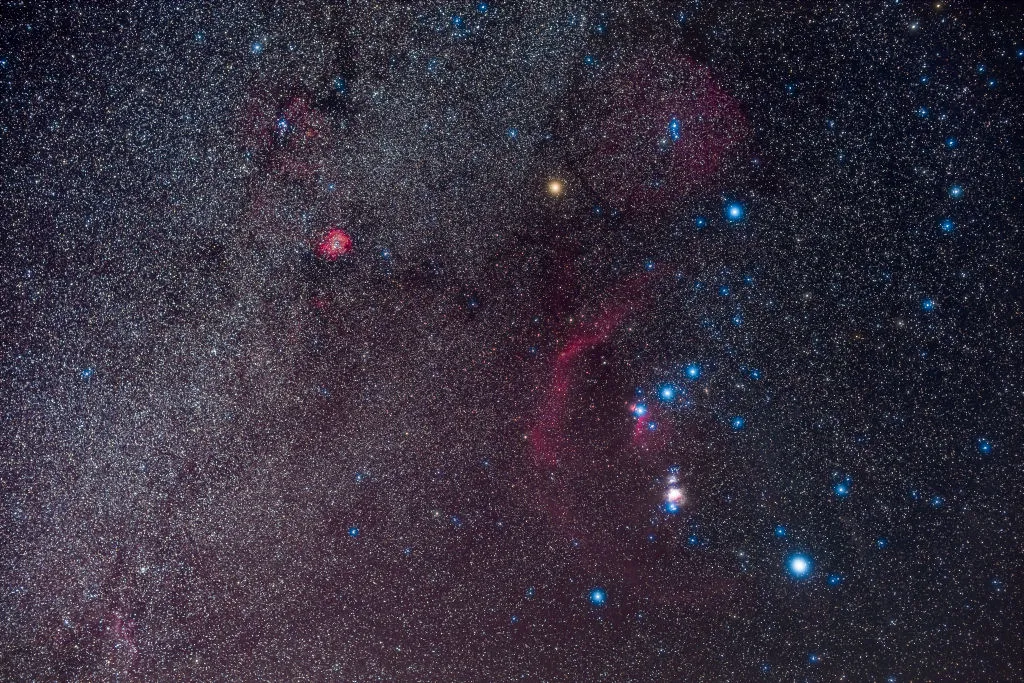Follow space and astronomy news, and you'll regularly hear discoveries about the red giant star Betelgeuse, and whether it's about to explode.
You'll read about whether Betelgeuse exploding could be a danger to life on Earth, or whether Betelgeuse exploding could be dangerous to look at.
The reason for this is because Betelgeuse – which forms the shoulder of the constellation Orion – is a red giant star nearing the end of its life.

That means it's set to explode – go 'supernova' – any time soon. However, that's 'soon' in the cosmic sense, which could be as much as 100,000 years!
But will Betelgeuse going supernova could be a danger to life on Earth? And have there been any such stellar explosions that have wiped out life on Earth in the past?

Past supernovae and mass extinctions
One scientific study says exploding stars could have been responsible for ravaging our planet’s atmosphere and causing two mass extinctions.
The discovery came from a survey of local stars that aimed to measure how often supernovae happen in the vicinity of Earth.
A supernova occurs when a massive star runs out of fuel at the end of its life and collapses.
It rebounds in a huge explosion that fires out radiation and stellar material in all directions.
"Supernova explosions bring heavy chemical elements into the interstellar medium, which are then used to form new stars and planets," says Alexis Quintana, who led the study while at Keele University in the UK.
"But if a planet, including Earth, is located too close to this kind of event, this can have devastating effects."

How a supernova could destroy life on Earth
If a supernova’s radiation were to sweep over Earth at close range, it could strip our planet’s ozone layer.
This would leave life vulnerable to ultraviolet radiation from the Sun, as well as causing years of acid rain.
To see if this might have happened to our planet in the past, Quintana’s team looked at a census of massive stars within 3,260 lightyears of Earth.
They used this data to estimate how often supernovae occur close enough to have an impact on Earth’s atmosphere, out to around 65 lightyears from our planet.
This revealed there should be around 2.5 nearby supernovae every billion years
That rate tallies with the number of extinction events seen here on Earth: the Devonian extinction 372 million years ago and the Ordovician extinction 445 million years ago.
These two events have been linked to a loss of ozone, though the cause of the sudden change was unknown.
Fortunately for us, only two nearby stars look set to go supernova in the next few million years: Betelgeuse and Antares.
Both of these are more than 500 lightyears away, a safe enough distance from our planet’s fragile atmosphere.

Could supernovae be good for us?
Words: Chris Lintott
Why are we so drawn to the idea of catastrophe coming from the skies?
The imminent death of Betelgeuse, the threat from asteroids like 2024YR4, and past extinctions and exploding stars undoubtedly have a morbid fascination.
But I’ll remind you that a nearby supernova may have kickstarted the formation of the Sun and its retinue of planets.
The Ordovician extinction may have created the conditions for a grand explosion in ecological diversity.
Even the asteroid that did for the dinosaurs was good news for us mammals.
Earth’s history and our own can only be properly understood once we pay attention to what’s happening in our cosmic neighbourhood, good or bad.
This article appeared in the May 2025 issue of BBC Sky at Night Magazine

